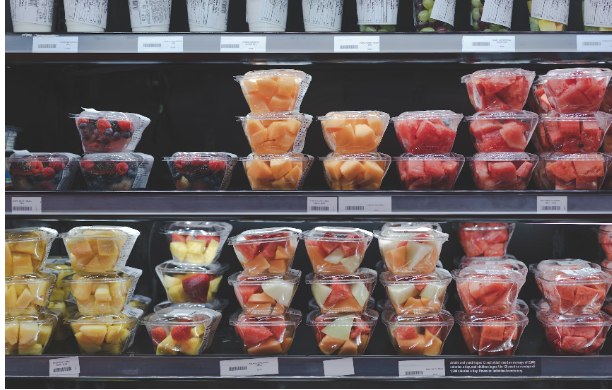Nowadays, with the growing environmental consciousness, the businesses are being forced to go for the green practices. The area where the most progress is being made towards eco-friendliness is in consumer spaces, especially through the use of electronic shelf labels (ESLs) with E-Ink technology. These tags not only help retailers but also make consumer spaces greener.
1. Energy Efficiency
Lower Power Consumption
E-Ink tags need very little power to keep their display, while traditional LCD displays always draw power. This energy-efficient operation cuts down the electricity consumption in consumer spaces, thus, the carbon emissions and the environmental impact are reduced.
Renewable Energy Integration
Retailers can also make the E-Ink tags more eco-friendly by using renewable energy sources like solar or wind power to power them. Through the combination of ESL systems with renewable energy solutions, consumer spaces can greatly cut down their dependence on fossil fuels and thus, move towards a more sustainable energy model.
2. Waste Reduction
Longevity and Durability
The E-Ink tags have a longer lifespan than paper labels, thus, the frequency of replacements is reduced and the waste generation is minimized. Their sturdy structure guarantees that they can endure the daily use in consumer spaces, thus, they produce less material waste over time.
Recycling Programs
Electronic shelf label manufacturers usually have recycling programs for the end-of-life ESLs. Through these programs, retailers can make sure that the old or broken E-Ink tags are properly disposed of or recycled, thus, avoiding the electronic waste from landfills and promoting the circular economy.
3. Enhanced Customer Experience
Retailers can personalize E-Ink tags to show personalized messages, promotions, or loyalty rewards to individual shoppers. This degree of personalization not only boosts the customer engagement but also cuts down the printed promotional materials, thus, creating a more eco-friendly consumer space.
4. Operational Efficiency
Electronic shelf label systems allow the retailers to centrally manage and update the pricing information across the multiple locations in real-time. This remote management feature makes the operations more efficient, cuts down the manual labor, and thus the environmental impact of paper-based price changes is also reduced.
5. Brand Image and Differentiation
Sustainability Messaging
The use of E-Ink tags enables retailers to show their dedication to sustainability to the consumers. Through the promotion of eco-friendly initiatives like the use of energy-efficient technology and waste reduction efforts, retailers can improve their brand image and stand out as environmentally responsible businesses.
Innovation Showcase
Consumer spaces that use E-Ink tags are the ones that are innovative and forward-thinking to the shoppers. Through the use of the latest technology that lowers the environmental impact, retailers become the leaders in sustainability and hence attract the environmentally conscious consumers who are looking for the green shopping experience.
To sum up, E-Ink tags are contributing to the environmental benefits in consumer spaces by decreasing energy consumption, cutting down the waste, improving the customer experience, increasing the operational efficiency, and spreading the sustainability message. Through the help of electronic shelf label manufacturers, businesses can still make progress in the creation of greener and more eco-friendly shopping environments.
Lid Love: Ingenious Cap Designs That Elevate Your Beauty Containers Beyond the Ordinary
